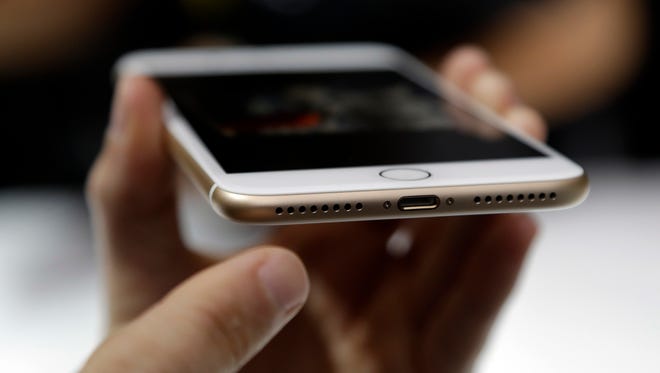How to buy an iPhone 7 without getting locked into a carrier
Q. Can you walk me through the various iPhone 7 deals? They’re a little overwhelming.

A. The deals don’t have to be as long as you keep one thing in mind: If you value preserving your ability to shop around for service, you don’t want to buy your phone from your carrier.
Purchasing an iPhone 7 or iPhone 7 Plus on the installment-plan options of AT&T, Sprint and T-Mobile frees you from coming up with $650 or more all at once, but it will also leave the phone locked to those carriers. You won’t be able to switch to another service without paying off the balance first, and if you go overseas you won’t be able to pop in a cheap prepaid SIM.
Sprint and T-Mobile’s international roaming deals are pretty good (and Sprint will also unlock an installment-plan phone for international use after 90 days), but AT&T’s international roaming remains punishingly expensive.
Verizon, however, doesn’t lock its phones even when sold on a payment plan.
How the iPhone 7 stacks up against the competition
The obvious alternative to carrier financing is the iPhone Upgrade Program that Apple introduced last year, which gives you a fully unlocked phone for 24 monthly payments, plus the $129 cost of its AppleCare+ handset insurance, also broken out over 24 months to add $5 and change to each bill. If you worry about cracking a phone’s screen, this is a better deal than it was a year ago because it now covers two screen-replacement incidents, each with a $29 fee.
But if you’re shopping for an iPhone to use with AT&T, Sprint or Verizon, Apple’s site also offers an Apple installment-plan option that doesn’t require buying AppleCare+ but also gives you an unlocked phone—liberated for both domestic and international use, Apple says.
The tradeoff is losing an easy upgrade after one year, but the slowing pace of phone evolution should make an annual upgrade a dubious proposition anyway.
(With the iPhone 7 and 7 Plus, I’d say the lack of a headphone jack represents a case of evolution in reverse.)
With T-Mobile, you can choose two years of interest-free financing through an Apple-branded credit card. That, too, gets you an unlocked phone.

To maximize your flexibility, you’ll want to buy a Verizon or Sprint iPhone. As PCMag’s Sascha Segan pointed out, the AT&T and T-Mobile models don’t include circuitry for the CDMA 3G service of the other two carriers, while the Sprint and Verizon models do support the GSM 3G service of their rivals (and of most of the rest of the world.)
Or you can wait for Apple to sell a no-SIM unlocked iPhone at full price, which in earlier years has not happened until after a new iPhone’s retail debut.
If, on the other hand, you’re both set on your current carrier and you have a good-condition iPhone 6, 6 Plus, 6s and 6s Plus that has now become cripplingly obsolete to you, the big four carriers have the better deal: a 32 GB iPhone 7 for free after you trade in your old model.
But as the fine print of these free-iPhone deals at AT&T, Sprint, T-Mobile and Verizon reveals, they’re all structured as installment-plan purchases, in which you get an offsetting credit against your service costs. So at the first three carriers, your new phone will arrive locked. And if you ditch the company before the two-year term of each offer, you have to pay off the remaining balance of the phone.
As my colleague Jennifer Jolly explains, you can avoid that entanglement by taking advantage of Apple’s own trade-in program, which cites $225 as a typical value for an iPhone 6. Or you can sell the phone back to sites such as Gazelle or Glyde.
Rob Pegoraro is a tech writer based out of Washington, D.C. To submit a tech question, e-mail Rob at rob@robpegoraro.com . Follow him on Twitter at twitter.com/robpegoraro .